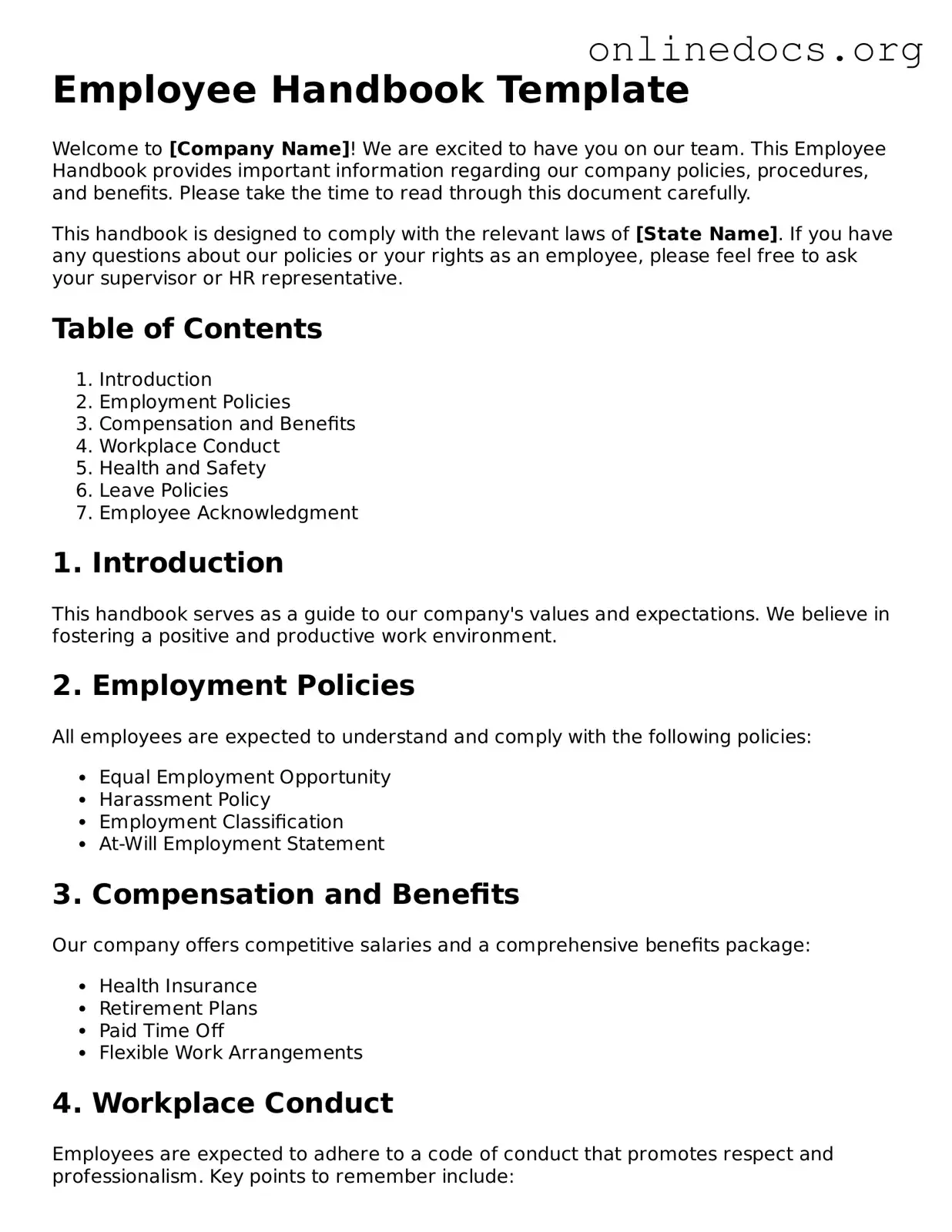The Employee Handbook is similar to the Company Policy Manual, which outlines the rules and regulations that govern employee behavior within the workplace. Both documents serve as essential guides to ensure that employees understand their rights and responsibilities. While the Employee Handbook often includes broader topics like company culture and benefits, the Company Policy Manual focuses on specific policies, such as attendance, dress code, and disciplinary procedures. Together, they create a comprehensive framework for workplace expectations.
Another document that resembles the Employee Handbook is the Onboarding Guide. This guide is typically provided to new hires to help them acclimate to the company. Like the Employee Handbook, the Onboarding Guide includes important information about company values, procedures, and resources available to employees. However, it is more focused on the initial transition period, providing step-by-step instructions for new employees to successfully integrate into their roles.
The Code of Conduct is another document closely related to the Employee Handbook. It details the ethical standards and behavioral expectations for employees. While the Employee Handbook may cover a wider range of topics, the Code of Conduct zeroes in on integrity, professionalism, and compliance with laws. Both documents aim to foster a positive work environment, but the Code of Conduct specifically addresses moral and ethical considerations in the workplace.
Similar to the Employee Handbook is the Benefits Guide, which outlines the various benefits offered to employees. This document provides details on health insurance, retirement plans, and other perks. While the Employee Handbook may mention these benefits in a broader context, the Benefits Guide goes into greater detail, ensuring that employees fully understand their options and how to access them.
The Training Manual also shares similarities with the Employee Handbook. This document provides specific instructions and guidelines for job-related training. Both documents serve to inform employees, but the Training Manual focuses on the skills and knowledge necessary for their roles. It often includes step-by-step procedures, while the Employee Handbook provides an overview of training opportunities and expectations for ongoing development.
The Safety Manual is another document akin to the Employee Handbook, focusing specifically on workplace safety protocols. This manual outlines procedures for emergency situations, safety equipment usage, and health regulations. While the Employee Handbook may include a section on safety, the Safety Manual provides detailed instructions and guidelines to ensure a safe working environment, emphasizing the importance of employee well-being.
The Performance Review Policy is similar to the Employee Handbook in that it outlines the criteria and processes for evaluating employee performance. This document provides clarity on how and when performance reviews will occur, as well as the metrics used for evaluation. Both documents aim to set clear expectations for employees, but the Performance Review Policy is more focused on assessment and feedback mechanisms.
For individuals looking to secure their rental agreements, a well-structured Lease Agreement is crucial. It not only sets the framework for the landlord-tenant relationship but also ensures that both parties are aware of their rights and obligations. To assist you with this, you can learn more about the comprehensive Lease Agreement details by visiting our website.
The Employee Rights and Responsibilities document also bears a resemblance to the Employee Handbook. This document clearly outlines the rights employees have within the workplace, such as anti-discrimination protections and the right to a safe working environment. While the Employee Handbook may touch on these rights, this document is dedicated to ensuring that employees are aware of their entitlements and responsibilities under the law.
Finally, the Termination Policy document is similar to the Employee Handbook as it addresses the procedures and guidelines related to employee termination. This document details the reasons for termination, the process that will be followed, and any severance or benefits that may be applicable. While the Employee Handbook provides a general overview of employment policies, the Termination Policy focuses specifically on the end of the employment relationship, ensuring transparency and fairness in the process.
